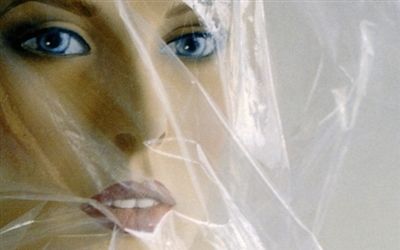Skaparinn / The Creator
Guðrún Eva reads from the book
The author Guðrún Eva Mínervudóttir narrates the theft of a state of the art sex-doll in The Creator, a story of alienation, loneliness and despair.
Poetic transillumination of the soul
Guðrún Eva Minervudóttir has in just a short time joined the ranks of the most remarkable writers in Iceland. She first attracted attention in 1998, when she was just twenty-two, for her short-story collection Á meðan hann horfir á þig ertu María Mey / While He Looks at You, You Are the Virgin Mary, since then she has published six novels.
She has attracted international attention for her books, Á meðan hann horfir á þig ertu María Mey was published in French translation in 2008, and the publishing company Scritturapura published her fifth novel Yosoy - Af líkamslistum og hugarvíli í hryllingsleikhúsinu við Álafoss / Yosoy— On Body Art and Mental Anguish in the Horror Theater at Álafoss (2005) in Italian the previous year; both translations were praised by critics in their separate countries. Publication rights for Yosoy have also been secured in Denmark.
Translation rights for Guðrún Eva's newest novel, Skaparinn / The Creator) (2008), have been sold to both the German publishers btb and Scritturapura in Italy, and most recently the publishers Portobello bought the rights to the book in Britain, which is outstanding news, since only 3% of the books published in Britain are translations, most of those crime novels or non-fiction.
In The Creator, two main characters occupy center stage: Sveinn and Lóa. Sveinn manufactures sex dolls; he is an eccentric loner who devotes his life fully to his unusual line of work. Lóa is a single mother of two and on the verge of a nervous breakdown. Her teenage daughter suffers from anorexia, has turned her back on the world around her and shut herself off in her room, where she is starving herself to death. Lóa and Sveinn's paths meet when a tire on Lóa's car blows outside of his home and workplace. Sveinn decides to break his isolation after a long work bout and offers Lóa a helping hand, which ends with her stealing his latest creation: a black-haired blow-up doll; she thinks that the adult sex toy can cure her daughter of her fear of the human body. Sveinn is stalked by a woman who believes that he is responsible for the death of her father, and he comes to the conclusion that Lóa is this woman.
Other men's loneliness provides Sveinn with his daily bread; he crafts eerily realistic likenesses of women, based on the distorted aesthetic values of the modern consumer society: “In this context it was also important that they be sweet rather than precisely beautiful. A bit of an air of an animated feature. Disney. A face composed of nothing but soft lines. No sharp-pointed actress bones” (p. 141). The dolls are patterned according to standardized fantasies and made so that the men who choose them are able to have their sexual desires fulfilled with the minimum amount of effort and the least amount of resistance. It is this loneliness, alienation, and despair that provides the foundation for the novel. Sveinn ponders his career and makes attempts to justify his dolls to himself, and Lóa, who works in an advertising agency, describes how she has long had the feeling that her life lacked meaning: “There was nothing noble or magnificent about duping people into constantly desiring the unbelievable images of luxury items” (p. 215), and in a desperate attempt to cure her daughter of her sick anthrophobia and anorexia she decides to force upon her a product of the sexual revolution.
As in Guðrún Eva's previous novel Yosoy, one of the focal points of the book is the human body; Guðrún plays with the uncanny and shadowy aspects that are wound together with the precise likenesses of human individuals: “Sveinn hung the last ones up to dry, with the hooks stuck into the backs of their necks. The holes from the hooks would thankfully be covered by the silky soft hair after he put on their heads. He put a yardstick between their ankles; it was important to let them dry with their legs slightly spread, because otherwise there was a risk that they would be difficult to handle, like agonized virgins.” (p. 9) The Creator is, however, simpler in scale and more accessible than Yosoy, since Guðrún Eva departs from her grand narrative style, where the setting was larger, more complicated, and the readers' attention distributed across a large gallery of characters. The narrative of The Creator is, on the contrary, precisely focused; the novel is composed practically, and Guðrún Eva shows and proves, time and again, that she has an astoundingly good command of writing.
The book received excellent reviews upon its publication. Gauti Kristmannsson, the literary critic for Viðsjá (a cultural program for Icelandic National Radio), said that The Creator is: “an outstandingly well crafted story… Guðrún Eva shows in a convincing way just how difficult a relationship between two people can be… Here the ugly beauty that the surface cannot bear gets a chance to break forth and show that its inner workings are always more than those of any silicon doll.” Páll Baldvin Baldvinsson, a critic for the daily Fréttablaðið, gave the book four stars: “Guðrún's narrative method in the role of the omniscient narrator is quite importunate to her characters... She scans with a poetic understanding of the bodies and souls of the characters.”

